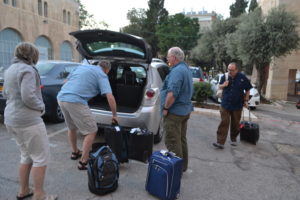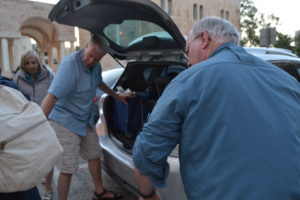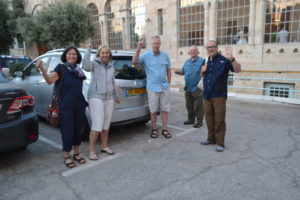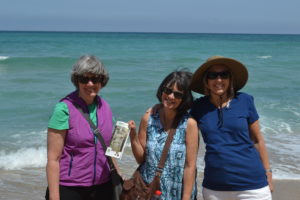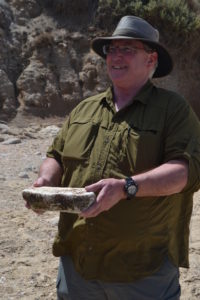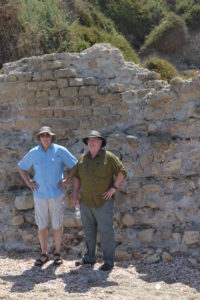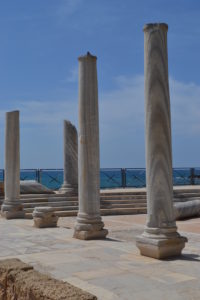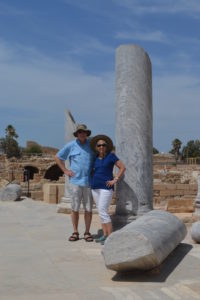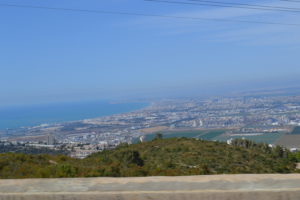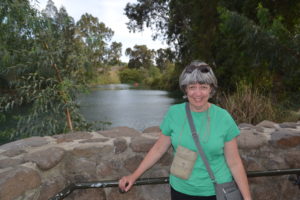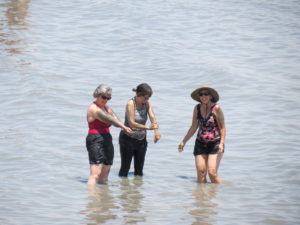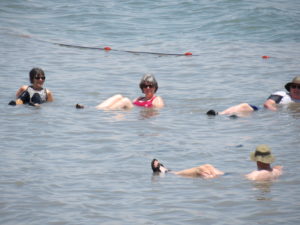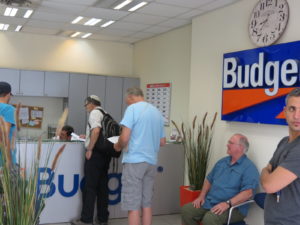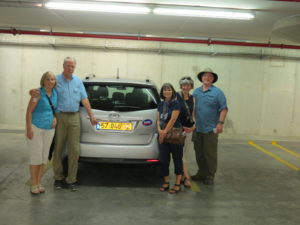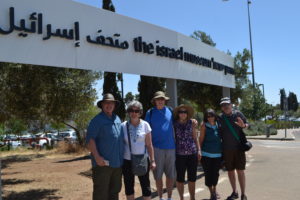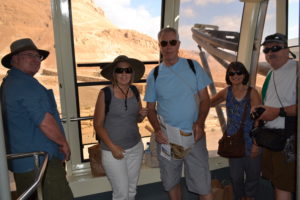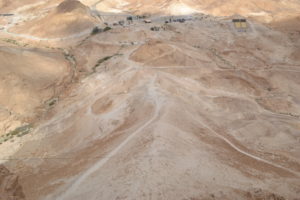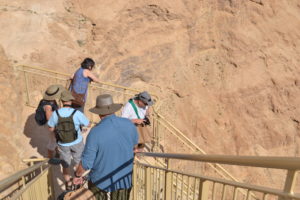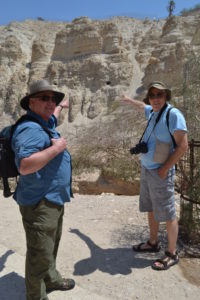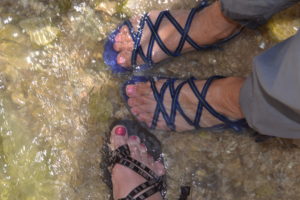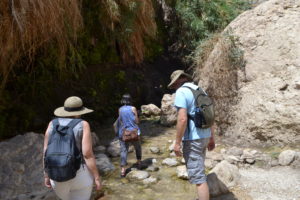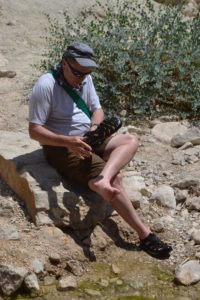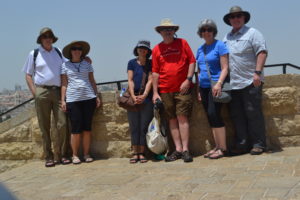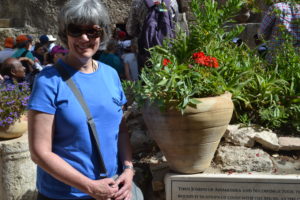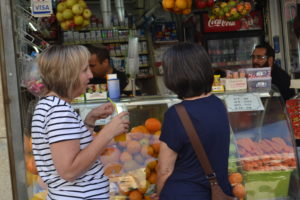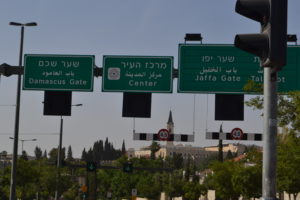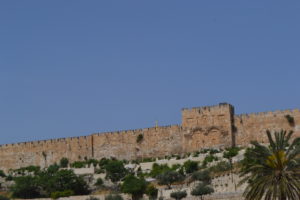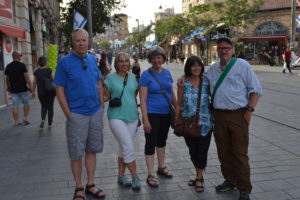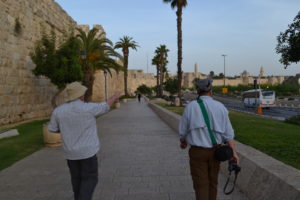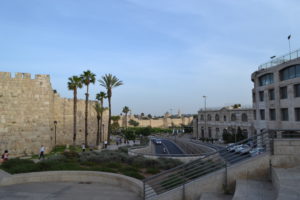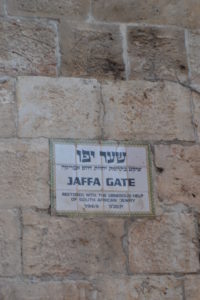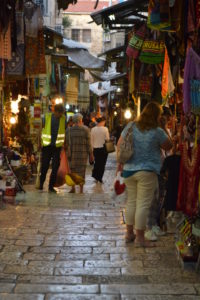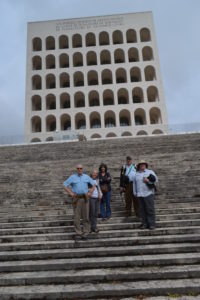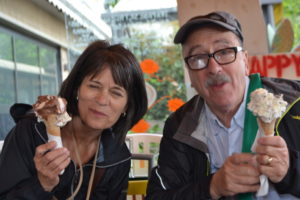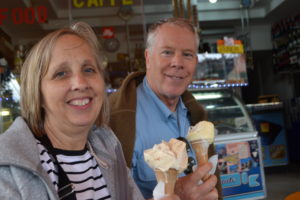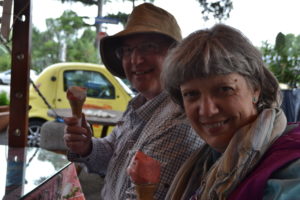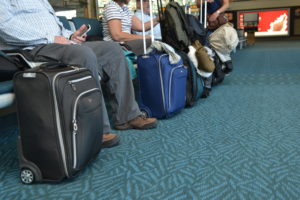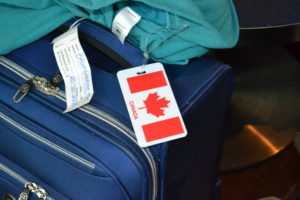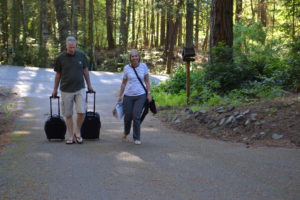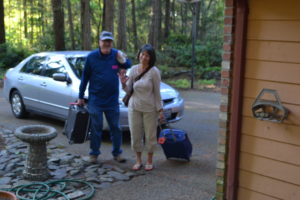So you know before I go into detail about how our group was harassed on temple mount this morning, we are fine. In fact, because we just had the best dinner ever on the patio of our new hotel, we’re really fine and maybe a bit giggly. But, I’ll start at the beginning.
For our first two nights in Jerusalem we stayed in a comfortable hotel in the new city, only because we couldn’t stay the full six nights where we are now. This morning we checked out at 6 a.m. and walked, with our luggage, about a mile to the YMCA Three Arches where we left our
luggage and took off on another day of exploration. Thankfully the weather has cooled to the mid-80’s and a pleasant, steady breeze kept us so much happier than yesterday.
Our first appointment was for a Western Wall Underground Tour beneath the wall of temple mount. Since we were early, we split up and visited the wall itself — men on the left and women on the right. Aren’t Jane and Anna adorable?
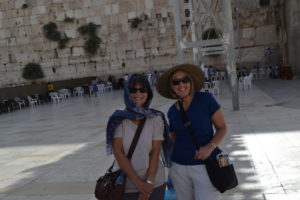
Waiting for our tour to start then, Jim thought he saw someone he recognized in the group going before ours. He went up to the guy and said, “Don’t I know you?” and indeed, it was Adam Brennan, who had worked with Jim at the shipyard in code 2340. I did not know this until we ladies came out of the WC to see Jim and Adam taking selfies together. (I know. It’s sideways and I can’t fix it at the moment.)
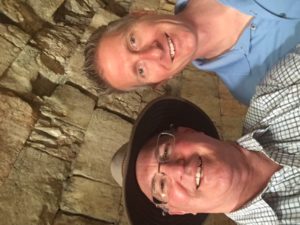
Our underground tour was led by Leah, who had a well-founded and profound hope for Israel. She was incredible. For the next hour she enthralled us with history — complete with Mt. Moriah models before Herod expanded it and after, and a video presentation of the temple and its destruction by the Romans. She would explain what was there 2000 years ago, and what was there now, and she kept us listening by asking questions. “What would have been above our
heads then? Blue sky!”
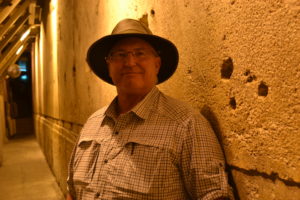
While walking through the tunnels, we touched foundation stones that had been prepared and moved by Herod’s workers. The biggest one of all was the length of two busses and weighed 300 tons (equivalent to two jumbo jets fully loaded).
Farther into the tunnels we walked on the stones from a public street that ran along the outside of the temple mount retaining wall that were the same ones as people were walking on 2000 years ago. Leah also pointed out a paving stone that was smooth and untouched, as if prepared to go into the walkway. It, and some workers tools had been found by archaeologists in that very spot, abandoned in the middle of a job as Romans invaded in 70 Ad.
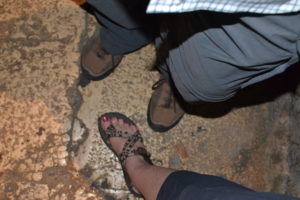
Next came Temple Mount. To get to temple mount, visitors who are not Muslims walk up a long ramp and go through security at the end, and that’s where our troubles started. Tim was first, and put his bag on the table. The guard searched it and finding a tract along with the yarmulke (kippah) he had been given at the underground tour, he sneered and threw it on the table. Tim asked if he could have it back when we left and the guard responded derisively that “you aren’t coming back this way.”
In the meantime, I was told I had to wrap my scarf around my shoulders (my shoulders were not bare). Another Muslim man motioned to me to, “come here, lady. This way. Follow me.”
Thinking that he wanted my scarf arranged more modestly, I walked behind him, trying to fix it so that it covered more of me. Next thing I knew they told Jane she had to
come, too. All this time I wasn’t really worried — I’ve been in Morocco a few times! — and expected him to take us to a place where ladies would show Jane and me how
to do it right. But, no.
This guy leads us behind a porch where he has a supply of cotton skirts and shows us how to put them on. In fact, he actually wrapped Jane’s around her — very weird for a Muslim man to do this — and then! Then he tells us we owe him 25 shekels. Jane finally hands him 100 and he gives her 50 back and tells me to pay Jane 25. Our knees were covered. Our shoulders were covered. We were wearing hats. The guy wanted our money.
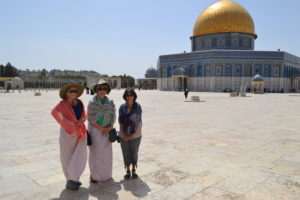
So, all covered now, the six of us walk towards the dome, taking pictures and feeling like we don’t want to stay here very much longer. On the back side of the dome are steps
leading down to a line of stones that look different from all the rest. At this point we are alone, and Tim begins explaining how Dr. Rasmussen told their group in 2007 that these stones could actually be ones from Herod’s temple. Right then, from above and behind us, someone hurls a full water bottle aimed between our group. It smacked the stones and splattered water on us.
If you look closely in the picture below, you can see the blur of the bottle as it hit the pavement. (Tim and Anna noticed this tonight as we were reviewing pictures — pretty timely photography, yes?)
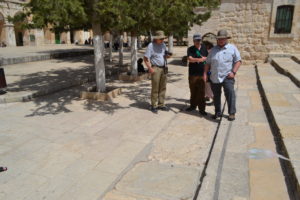
That was enough. We were shaken and decided to get out of there, so we did.
Later, during a pleasant lunch in the Jewish quarter where the people are so friendly and talkative, we traded money with a coin collector. An elderly Jewish gentleman
approached Dave and asked if he had an American dollar because he collected money from all over the world, and he would trade for the equivalent in shekels. Dave gave him a dollar, Tim gave him five dollars for a Christmas present (for which Anna scolded him). Coin collector had been at this since he was 14 years old, and has lots of money!
Near ou rlunch place was the Cardo, and the Cardo shopping area run by the Jews. We ladies needed to do some shopping, so the menfolk collapsed on stairs while we spent some money. Jane and I each bought beautiful Roman glass necklaces, which came with authenticity cards because the glass came from a Roman glass mining (?) place in Caesarea. Our saleslady was delighted to explain the artistry, and made us try on many necklaces, and Jane said she’d go ask her husband if she could buy one. My husband happened to walk in and said, “you can buy two!” which was a very good thing to say and no problem because he knows I wouldn’t anyhow. Later she informed us that women shouldn’t need to ask their husbands if they can spend money. “You have your own money, yes?” she asked me. “Even in Morocco my mother always said that women must have their own money” Our lady’s parents were Moroccans who had moved to France. We talked with her extensively about Morocco and the Jews who used to live there.
If it weren’t already so late, I could write about the Temple Institute museum and how they have instruments and utensils all prepared for the next temple. And about how the Jews cleared the plaza in front of the Western Wall in 1967 in just THREE HOURS. And about this hotel, which is historic and gorgeous. And about JUC and the awesome graveyard.
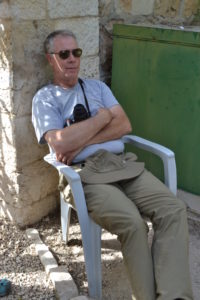
Good night for now. We’re walking through Hezekiah’s tunnel first thing in the morning, then off to a museum.
Love you everybody!

